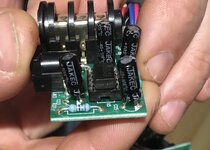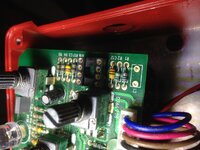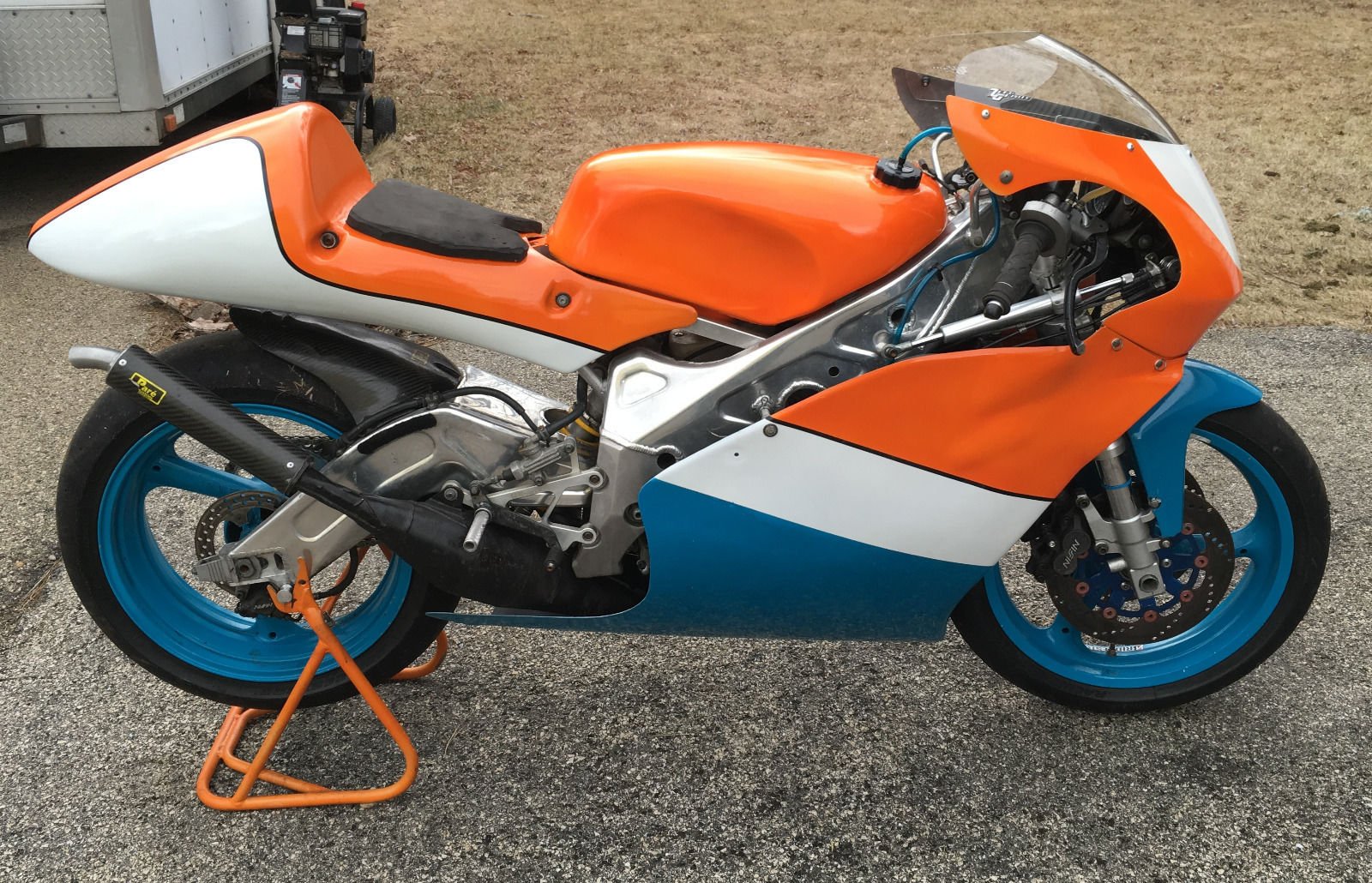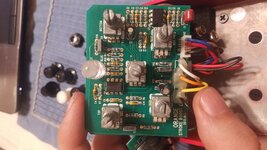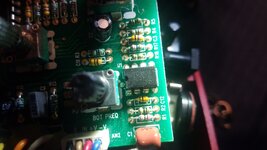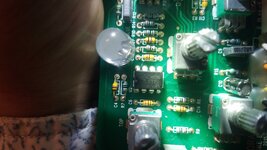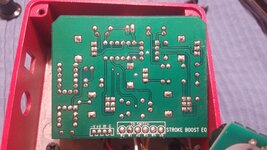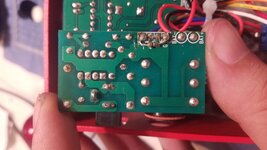A few rehearsals ago I wasn't paying attention and plugged my 15V, center-positive supply into the Two-Stroke, which takes 9V-12V center-negative. There is a reverse polarity protection diode, but that just dumps everything into R37, which got burnt to a crisp inside my pedal. I'm guessing it's a flameproof fusible resistor based on it's circuit location, but since its markings went up in smoke and there is no silkscreened value, I'm not sure what value to replace it with. I can likely work things out based on the surrounding components and inferred intent, but to be on the safe side (I'm still learning) I'd prefer just putting in whatever Orange did initially. Does anyone own one and is willing to post pictures of the input board? It's easy to access, just unscrew the back and unscrew one 1/4" jack, and you're in.
Here's what mine looks like currently:

I never realized how similar the smell of burnt resistor is to burnt LED.
Here's what mine looks like currently:
I never realized how similar the smell of burnt resistor is to burnt LED.

